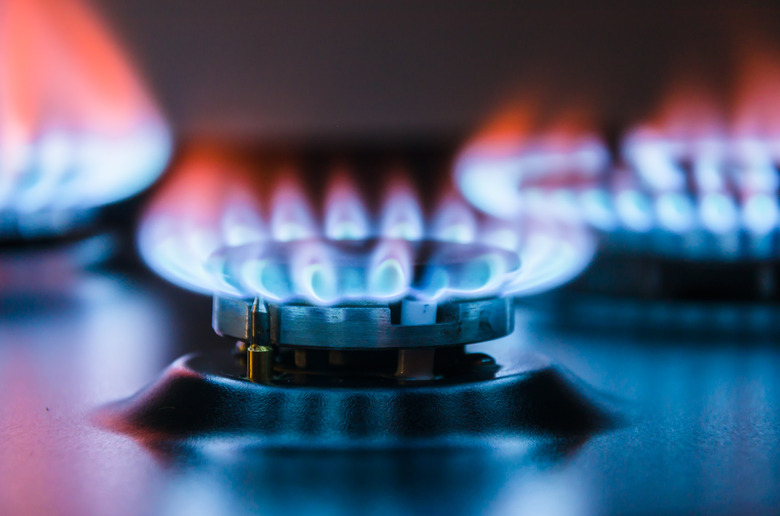What Happens When Gas Is Heated?
Over a period of centuries and through multiple experiments, physicists and chemists have been able to relate key characteristics of a gas, including the volume it occupies (V) and the pressure it exerts on its enclosure (P), to temperature (T). The ideal gas law is a distillation of their experimental findings. It states that PV = nRT, where n is the number of moles of the gas and R is a constant called the universal gas constant. This relationship shows that, when pressure is constant, volume increases with temperature, and when volume is constant, pressure increases with temperature. If neither is fixed, they both increase with increasing temperature.
TL;DR (Too Long; Didn't Read)
When you heat a gas, both its vapor pressure and the volume it occupies increase. The individual gas particles become more energetic and the temperature of the gas increases. At high temperatures, the gas turns into a plasma.
Pressure Cookers and Balloons
Pressure Cookers and Balloons
A pressure cooker is an example of what happens when you heat a gas (water vapor) confined to a fixed volume. As the temperature rises, the reading on the pressure gauge goes up with it until the water vapor starts escaping through the safety valve. If the safety valve wasn't there, the pressure would keep increasing and would damage or burst the pressure cooker.
When you increase the temperature of a gas in a balloon, the pressure increases, but this only serves to stretch the balloon and increase the volume. As the temperature continues to rise, the balloon reaches its elastic limit and can no longer expand. If the temperature keeps going up, the increasing pressure bursts the balloon.
Heat Is Energy
Heat Is Energy
A gas is a collection of molecules and atoms with enough energy to escape the forces that bond them together in the liquid or solid states. When you enclose a gas in a container, the particles collide with each other and with the walls of the container. The collective force of the collisions exerts pressure on the container walls. When you heat the gas, you add energy, which increases the kinetic energy of the particles and the pressure they exert on the container. if the container weren't there, the extra energy would induce them to fly larger trajectories, effectively increasing the volume they occupy.
The addition of heat energy also has a microscopic effect on the particles that constitute a gas as well as on the macroscopic behavior of the gas as a whole. Not only does the kinetic energy of each particle increase, but its internal vibrations and the speeds of rotation of its electrons do too. Both effects, combined with the increase in kinetic energy, make the gas feel hotter.
From Gas to Plasma
From Gas to Plasma
A gas becomes increasingly energetic and hotter as the temperature rises until, at a certain point, it becomes a plasma. This occurs at temperatures that occur on the surface of the sun, about 6,000 degrees Kelvin (10,340 degrees Fahrenheit). The high heat energy strips the electrons from the atoms in the gas, leaving a mixture of neutral atoms, free electrons and ionized particles that generates and responds to electro-magnetic forces. Because of the electrical charges, the particles can flow together as if they were a fluid, and they also tend to clump together. Because of this peculiar behavior, many scientists consider a plasma to be a fourth state of matter.
Cite This Article
MLA
Deziel, Chris. "What Happens When Gas Is Heated?" sciencing.com, https://www.sciencing.com/happens-gas-heated-8174546/. 26 April 2018.
APA
Deziel, Chris. (2018, April 26). What Happens When Gas Is Heated?. sciencing.com. Retrieved from https://www.sciencing.com/happens-gas-heated-8174546/
Chicago
Deziel, Chris. What Happens When Gas Is Heated? last modified March 24, 2022. https://www.sciencing.com/happens-gas-heated-8174546/
